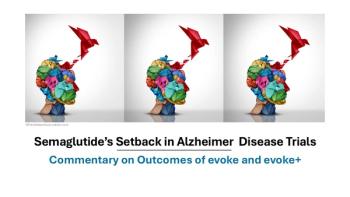
Marijuana for Migraines: A Real Possibility
A neurologist who treats headache has his eyes opened to the real possibility of marijuana as medicinal.
Just before the end of the year 2015 in my home state of New York, medical marijuana became part of the medical landscape. We’ve had more than a year to sort out our personal and professional feelings about marijuana as the legislation was approved in 2014. And like real life, even when the area should be objective and calculated or based on scientific facts, personal feelings color how we respond to information and what information we choose to recognize, ignore, or even deny.
[[{"type":"media","view_mode":"media_crop","fid":"45106","attributes":{"alt":"","class":"media-image media-image-right","id":"media_crop_4966410393960","media_crop_h":"0","media_crop_image_style":"-1","media_crop_instance":"5114","media_crop_rotate":"0","media_crop_scale_h":"0","media_crop_scale_w":"0","media_crop_w":"0","media_crop_x":"0","media_crop_y":"0","style":"height: 248px; width: 300px; float: right;","title":"©William Casey/Shutterstock.com ","typeof":"foaf:Image"}}]]I was against the idea of marijuana as a “medical” option when I first heard of it. In my consciousness, marijuana was a recreational drug, that notion reinforced by popular culture with movies like Cheech and Chong’s “Up in Smoke.” My thoughts were that I would have patients like characters seen in the movie “Reefer Madness” showing up in my office and asking to be given marijuana for whatever neurological ailment they had, their goal being to “get high,” not to be relieved of any symptoms.
When I read the text of the New York
The course turned into a real eye opener. The pharmacology that is currently known about marijuana caught me by surprise.
A few questions
As I completed the albeit too-short course, the first question that came to my mind was: “Isn’t marijuana and its major component, tetrahydrocannabinol (THC), a DEA schedule 1 substance?” If it was, this meant it was considered to have a high potential for abuse, to have no accepted medical treatment in the US, and wasn’t safe to use even under medical supervision.
If the above was true, why was there an endocannabinoid system in our bodies? More specifically, why was one of the receptors for cannabinoids, cannabinoid receptor type 1(CB1), ten times more prevalent in the brain than even the µ receptor for opioids? A follow-up question was why was the endocannabinoid system affecting multiple disparate systems that involve pain and appetite control, digestion, mood, immunity, fertility, tumor surveillance, and even bone structure, not just through the CB1 but also a cannabinoid receptor type 2 (CB2)? Why would we have endogenous cannabinoids such as arachidonoylethanolamine (anandamide [AEA]) and 2-arachidonoylglycerol (2-AG) present in our bodies, derivatives of arachidonic acid, especially if there are no beneficial effects?
I learned that THC was not the component of marijuana that is active in its beneficial effects in humans. It was easily outflanked by cannabidiol and cannabinol which interact with CB1 and CB2. Neither compound produces the typical psychotic and “high” effects seen with THC. And these are only 3 of the more than 60 phytocannabinoids that have been studied that are present in the marijuana plant.
As I completed the course, I realized that what little we know suggests a hidden treasure trove for those of us in medicine.
What about headache?
The knowledge base gets smaller when we are talking about headache medicine. Still, Dr. Eric Baron, a neurologist at the Cleveland Clinic, in his
[[{"type":"media","view_mode":"media_crop","fid":"45107","attributes":{"alt":"","class":"media-image media-image-right","height":"200","id":"media_crop_1158719707079","media_crop_h":"0","media_crop_image_style":"-1","media_crop_instance":"5115","media_crop_rotate":"0","media_crop_scale_h":"0","media_crop_scale_w":"0","media_crop_w":"0","media_crop_x":"0","media_crop_y":"0","style":"float: right;","title":"©Lighspring/Shutterstock.com ","typeof":"foaf:Image","width":"200"}}]]I would do a disservice to Dr. Baron’s work in trying to summarize his report. Let’s just say that if you understand even part of the mechanism of triptans with their modulation of serotonergic pain pathways, consider the endocannabinoid system as it interacts with these same serotonergic neurons, through CB1 receptors, to further modulate trigeminal and spinal pain pathways; or through CB1 and CB2 receptors affecting GABAergic and glutaminergic signaling. Consider the NMDA inhibitory modulation from CB1 and its effects on decreasing or stopping cortical spreading depression which we know is associated with migraine pain and trigeminal neuronal activation. Dr. Baron’s article even brings up the suggestion that migraines and other chronic pain syndromes may be due to deficiencies in the endocannabinoid system!
This would make some of those who advocate for the use of medical marijuana want to say “put that in your pipe and smoke it.”
Reference
- Baron, Eric.
Comprehensive review of medicinal marijuana, cannabinoids and therapeutic implications in medicine and headache: what a long strange trip it’s been … . Headache 2015;55:885-916.
Newsletter
Enhance your clinical practice with the Patient Care newsletter, offering the latest evidence-based guidelines, diagnostic insights, and treatment strategies for primary care physicians.
















































































































































































































































































